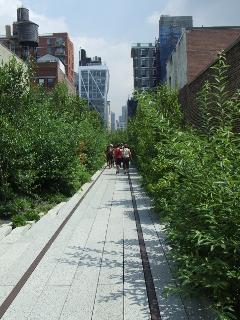
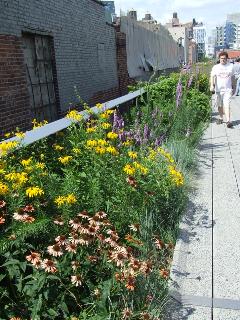
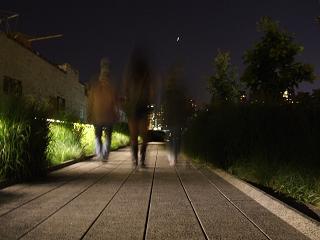
All photographs by Tom Baker, 2011
This dissertation is a consideration of the cultural landscape of the High Line, a park in New York City built atop a former elevated railway line. Constructed in the 1930s, the railway was left unused from 1980 until its recent redevelopment as a park, during which time it had become overgrown with naturally-seeded plants. !e contemporary landscape of the park takes major influence from this 'wilderness', as well as from the materiality of industrial-era New York. A critique of the formation of nature at the High Line suggests that it represents a landscape of the neo-pastoral, exhibiting a similar cultural impulse to the creation of nineteenth century pastoral parks, but with a different aesthetic - it is an idealised urban wilderness. Julian Stallabrass (1999) develops the term 'urban pastoral' to refer to the treatment of the inner city in the work of the Young British Artists; this dissertation employs the concept to think through the implications of the use of the structure and industrial fragments of New York in the production of the landscape at the High Line. It is suggested that there is little provision made for 'traditional' park uses, and that it is first and foremost a landscape rather than a park. Elsewhere, discussions of political ecology and the neoliberalisation of processes of urban change make connections to broader theoretical strains in urban studies.
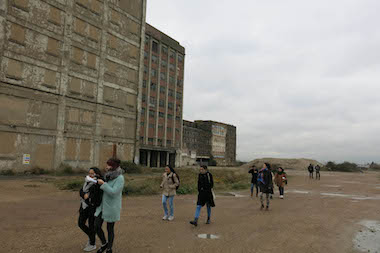
Millennium Mills visit (with thanks to Rob Baffour-Awuah)

Typography Bus Tour. Photo: Caroline Bressey
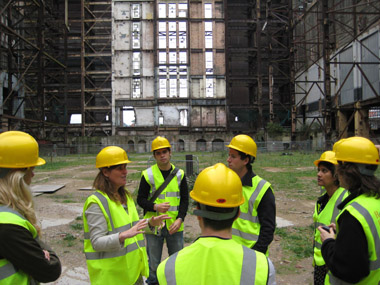
Battersea Power Station Visit. Photo: Andrew Harris